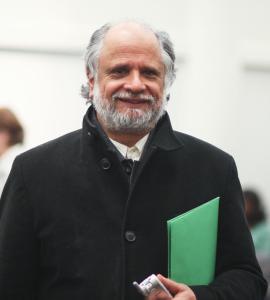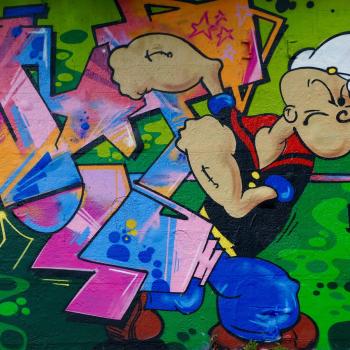Van Halen. Dreams. 5150, 1986.

Diaspora – A Tragedy of Circumstance for Liberal Existence
I have come to realize that we all live, reside, and participate in our own diasporic trajectory. The act of a diaspora is defined by vocabulary.com as:
The term diaspora comes from an ancient Greek word meaning “to scatter about.” And that’s exactly what the people of a diaspora do — they scatter from their homeland to places across the globe, spreading their culture as they go…But the word is now also used more generally to describe any large migration of refugees, language, or culture (2023).
From this definition, we can see that the history of the term relates to a group of people but is not limited to those foci. We each are residing in the current space, place, and time. The understanding of reality, the cognitive process we each endure daily is more than a part-and-parcel action performed and articulated by our own attention to matters, relationship exchanges, reactions to issues, and thought experiments. We each participate in some form of a diasporic motion. We live throughout the script and narrative events of our days. We are positioned to exist in-between spaces created by the dynamic intersections of cultures. This is the Third Space identified and critiqued by the Indian-British philosopher Homi Bhabha. We repeatedly encounter expected/unexpected events, people, issues, and relationship expressions. These encounters subtextually as well as viscerally demand that we formalize our identity. This point of interaction, intercultural exchange, and agency of identity is not frozen in context, meaning, action, space, place, or time. Even without attempting to endure a lengthy voyage across a physical landscape, we become actors in a diasporic motion – thought as well as physical.

Homi Bhabha, 2023.
Through this inevitably dynamic intersection of events, we compose an individual constellation of activities that intersect in unavoidable, sometimes unspoken yet very real circumstances. These interactions can be limited to the digital domain, expanded into the physical landscape, or insulated as cognitive problem-solving actions. Bhabha’s Third Space points to the critical theory that our interactions are not homogenous in their narrative. As noted, we are challenged – daily – to negotiate and define our identity. This process is not free of influence from multiple factors (history, knowledge, cultural exposure). As we engage within this Third Space, we embark on a diaspora, one that is as fluid and dynamic as any minute detail we face at any given moment in the ever-changing drama of our fast-paced 21st global-local lives.
Our existence revolves around these multiple linking points of diasporas. We are actors in a plethora of unstable diasporas. Consider that our identity, then, becomes an amplification of the interactions, relationships affect/effect, space-place-time, and cognitive structure of multiple diasporas we have historically passed, those lived in an ephemeral chronological and often linear passing of time, and those anticipated in presumptions of time, events, activities yet to take place. This existential identity signification is quite a sobering principle to consider, least of all to ascertain. We are all absorbed by the phenomenological binding and bending of stable-change motion. This activity most of us take for granted is not specific to any one culture, codified by socio-political-economic factors, nor unbiased in any matter of relationship or identity. The phenomenological borders of our lives situate our diaspora projections and change our diasporic perspectives in what can seem like a never-ending cycle. To release ourselves from this repeated cycle of identity modification, most of us lean upon descriptions of cultural diversity and individual differences. This pivot point is only a diversion from the inevitable instability of life, culture, history, and cognitive resolution. We each endure multiple diasporas whether we realize it or not. Equally, we all can be viewed as an im/migrant.
THE SELF AS AN IM/MIGRANT
Migration retains a similar position as the concept of diaspora. A migrant, as defined by the United Nations Organization of Migration (UN Migration, IOM) is:
as any person who is moving or has moved across an international border or within a State away from his/her habitual place of residence, regardless of the person’s legal status, whether the movement is voluntary or involuntary, what the causes for the movement are, what the length of the stay is (2023).
The current political rhetoric surrounding the terms immigrant and migrant are cast in fixed biased agendas. I argue that, as complicated individuals seeking to better our lives, faith, and belief values, we must look beyond the political biases and agendas prescribed to the terms immigrant and migrant. To critically understand our flexible positions in the global-local context, we need to see how the directions of our lives survive as migratory motions. To be honest about how we can better our lives, our faith, and our belief values, we need to scrutinize our implicit migration patterns. Applying a critical lens to these patterns can provide us an insight into how we have/have not devalued our lives, core of faith, and belief value. If we elect to rather hold onto externally biased definitions of these terms – migrant and immigrant – then, we are destined to repeat old patterns of limitations that keep our growth stagnant. The proverbial “ball is in our court” is to either advance our perspectives or reside as a comfortably defeated individual. Agency for change is not an easy step-by-step operation. Stagnation is a well-worn role without any action needed. To expand our understanding that we participate in our life as both a migrant and an immigrant can, for some, be an uncomfortable realization. Yet, it is this exact position of hesitation allowing outside elements to affect, affect, and direct our attentions, without our ethical conscious review of how these are applied to our lives, can leave us deprived of opportunities to improve our position in life, the view of ourselves, and cooperative interactions on all levels. This potentially limited action firms the borders that physically and metaphorically quarantine our mind, body, and spirit.
The term immigrant, I argue, with a focused liberating perspective, can generate a release in the archetype areas of our life – mental, physical, and spiritual. Casting away prescribed biased definitions employed by socio-political economic structures, we find a useful dialectic tool that lay dormant awaiting our embrace. By participating actively as an immigrant, we learn to endure and surpass physical and conscious self-imposed borders. These liminal points change into steps toward a productive layer of self-liberating agency. We become immigrants even within our own spheres of global-local interactions. We migrate across the digital divide each time we encounter technology. We migrate across philosophical roadblocks each time we tackle a thought experiment and experience. We migrate across intercultural exchanges, relationships, and beliefs. Daily diasporas are unstable, in company with the complexities of our actions and thoughts as an immigrant (release from a defined space-place-time forced upon us for a false identity formation) and migrant (release from an arrived space-place-time to expand a construction of identity). This critical discourse provides influenced opportunities for each to reevaluate the trajectory of our indeterminate lives. Movement, albeit determinate or indeterminate, states that our positions and actions follow a diaspora. The context, content, and meaning of these diasporic trajectories qualify that we become immigrants/migrants (read: im/migrant) through the repeated intersections of a linear temporal landscape coded by global-local phenomenological spheres of influence that sculpt our mental, physical, and spiritual perspectives. Binding together the provided analysis of diaspora and im/migrant hermeneutics we can begin to shift core factors in our life with the intent to advance these factors toward self-well-being and a firming of faith and belief.

Hein de Haas, 2010.
We are all im/migrants to one extent or another. Hein de Haas points to the aspirations-capabilities that frame the necessity for im/migrant movement (2021). Following Haas’ theory of migration, we can surmise that the movement within our days is either “instrumental” (seeking a means to an end) or “intrinsic” (directly affecting our assumptions or realities of well-being) (2021). Capturing this agency, we can see how Haas has been able to pave a useful trajectory for our daily movement – our lived diasporas as im/migrants in both a virtual and physical global-local environment. This framework helps [us] to understand the complex and often counter-intuitive ways in which processes of social transformation and ‘development’ shape patterns of [im/]migration and enable us to integrate the analysis of almost all forms of [im/]migratory mobility within one meta-conceptual framework. (Haas, Migration Institute 2021)
We all migrate through our lives. We each traverse across our own designated borders. We endure some length of stay – minor, lengthy, or even permanent – at various points throughout our lives. These inescapable elements align us as an im/migrant.
We are all active within a diasporic trajectory. Haas (2008, 2010) denotes four points that speak toward the activity of our im/migrant diasporic attraction; 1. Direction (global-local physical positions), 2. Volume (length of time), 3. Composition (personal attention and attitude), and 4. Timing (temporal realization).
THE DIASPORA OF A FAITH-BASED IM/MIGRANT
The unstable unfolding process of life inhabits and influences our daily movements along an ever-changing plane of existence. This process is not voluntary, but a revolution put into action by and through our own actions, content, contexts, space-place, and time. How we align our faith and belief system with the governing principles of im/migrant diasporic agency illustrates how we come to address, understand, participate, qualify, and embrace our life – faithfully speaking.
The Third Space of Homi Bhabha is not a limited sphere devoid of attention to our faith and belief. This active arena of engagement can be read as a nuclear center protecting as well as enhancing our faith and belief. By encountering alternative objectives to our faith and belief system, the Third Space opens a dialogue for our faith beliefs to speak to and receive input from these surrounding perspectives and external references. In effect, the Third Space provides the opportunity for us to strengthen our faith and belief system as it faces the impact of alternatives. Annexing Haas’ four points of intrinsic movement attraction, our faith and belief system become liberated from a frozen localized definition and position. The Direction, Volume, Composition, and Timing of our faith and belief can be seen as living entities that emerge, grow, develop, and actively participate in our physical-cognitive lives. Culling these critical theories together, with an apologetic reading, we see realize that the living corpus of our faith and belief system outlines our im/migrant diasporas. Without the interactions, interruptions, indeterminate and oppositional elements thriving and forcing our global-local attention, our faith and belief foci would stagnate. Therefore, the distractions of our microscopic digitally saturated, and socio-politically polluted days aid in strengthening, growing, and fostering the progress of our faith and belief system so that we can understand, cope, and be liberated from these traumas through each daily im/migrant diasporic direction. Indeterminate unaligned actors need not dismantle our faith or belief system. Taking an im/migrant diasporic apologetic approach, we are liberated from these negative manifestations, and can further fortify our faith and belief considering these ongoing and unexpected forces.
Conclusion and Thoughts
The apologetic analysis outlined here is produced to help us all see our lives in a varied light of possibility. Positioning faith-belief as core components in the revelation that our living complexities of ephemeral existence can be physically and cognitively managed as im/migrant diasporic movement is argued here for the progress of our faith and belief. This apologetic rescripting of critical theories of space-place-time into narratives supporting the advancement of faith-belief systems opens a dialogue that may otherwise be neglected. The relevance of this critical reading is supplied to help navigate the troubled waters of the 21st-century media-trapped pop culture stereotypes that stand in contrast to faith-based belief systems. It’s necessary to think beyond the internet. It’s vital to remain aware of global-local fallacies presented as truth that avoid the importance of holding strong to faith and belief. It’s eye-opening and liberating to know that our days need not be addressed like a demolition derby where we crash against stronger forces and eventually fail to operate any further. This apologetic critical analysis voices the possibility of seeing the dynamics of life in a flexible manner with the guard rails of faith and belief keeping us on our ethical path. We migrate every day; we journey on a diaspora without a true beginning or end. The circumference of our lives – I argue here through dislocating and re-reading critical epistemologies of social-cultural theory – is maintained by faith, secured by our belief system, and liberally grows toward inexplicable areas that only an im/migrant could contact on their diasporic journey into a new life.
Alan Lechusza
https://www.patheos.com/blogs/thesweatpantsessions/
https://medium.com/@tri4lechusza
REFERENCES
Bhabha, Homi. Wikipedia.org. https://en.wikipedia.org/wiki/Homi_K._Bhabha
Colothan, Scott. The Sammy Haggar era of Van Halen ‘doesn’t get any respect,’ says Wolfgang Van Halen. Planet Rock, 17 March 2023. https://planetradio.co.uk/planet-rock/news/rock-news/sammy-hagar-era-van-halen/
Globe Photos/Media Punch, Van Halen, Variety, 26 December 2020, https://variety.com/2020/music/news/sammy-hagar-eddie-van-halen-last-conversation-1234848577/
Haas, Hein de. A theory of migration: the aspirations-capabilities framework. Comparative Migration Studies, 9:8, 24 February 2021, Springer Open.
Haas, Hein de. Migration Institute. Migrationinstitute.org/people/hein.
Haas, Hein de. Wikipedia.org. 2008 and 2010, 1 November 2023. https://en.wikipedia.org/wiki/Hein_de_Haas
Oxford Bibliographies.com. Homi Bhabha. 11 January 2018. https://www.oxfordbibliographies.com/display/document/obo-9780190221911/obo-9780190221911-0057.xml
United Nations Migration.2023. https://www.iom.int/about-migration
United Nations Organization of Migration. 2023. https://www.un.org/en/fight-racism/vulnerable-groups/migrants#:~:text=Who%20is%20a%20migrant%3F,the%20person’s%20legal%20status
Van Halen. Dreams. 5150, 1986. https://www.youtube.com/watch?v=mGpMUYmqHZM
Vocabulary.com. Diaspora. 2023. https://www.vocabulary.com/dictionary/diaspora#:~:text=The%20term%20diaspora%20comes%20from,from%20Israel%20by%20the%20Babylonians
Wahala, John. Critical Theory and Mass Immigration. Center for Immigration Studies, 19 April 2021. https://cis.org/Wahala/Critical-Theory-and-Mass-Immigration













